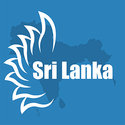Difference between revisions of "Ceylon Tobacco Company (CTC)"
| Line 1: | Line 1: | ||
[[File:Sarc-SriLanka.png|right|125px|link=Category:Sri Lanka]] | [[File:Sarc-SriLanka.png|right|125px|link=Category:Sri Lanka]] | ||
==Background== | ==Background== | ||
| − | [http://www.ceylontobaccocompany.com/ Ceylon Tobacco Company PLC (CTC)] holds the monopoly of cigarette manufacturing and sales in [http://www.tobaccounmasked.lk/index.php?title=Tobacco_Industry_Country_Profile_%E2%80%93_Sri_Lanka Sri Lanka]. It is a subsidiary of | + | [http://www.ceylontobaccocompany.com/ Ceylon Tobacco Company PLC (CTC)] holds the monopoly of cigarette manufacturing and sales in [http://www.tobaccounmasked.lk/index.php?title=Tobacco_Industry_Country_Profile_%E2%80%93_Sri_Lanka Sri Lanka]. It is a subsidiary of British American Tobacco (BAT), which owned 84.13% of the shares in 2018.<ref name = Annual2016> Ceylon Tobacco Company PLC. [http://www.ceylontobaccocompany.com/group/sites/sri_9pmjn9.nsf/vwPagesWebLive/DO9PMKN2/$FILE/medMDAKWEUJ.pdf?openelement Annual Report 2016], 2017, accessed May 2017</ref> |
CTC is engaged in the complete manufacturing process of cigarettes in Sri Lanka, from tobacco cultivation to cigarette production.<ref name = Annual2016/> CTC owns 99% of the market with the remaining 1% comprising of imported cigarettes.<ref name = EconomicsofTobaccoControl> N.Arunathilake, M.Opatha, [https://openknowledge.worldbank.org/handle/10986/13626 The Economics of Tobacco in Sri Lanka.], ''Economics of Tobacco Control'' Paper No. 12, Tobacco Free Initiative, World Health Organization, 2003, accessed November 2016</ref> CTC also exports its manufactured cigarettes, which contributes approximately 1% to its overall annual revenue.<ref name = Annual2016/> | CTC is engaged in the complete manufacturing process of cigarettes in Sri Lanka, from tobacco cultivation to cigarette production.<ref name = Annual2016/> CTC owns 99% of the market with the remaining 1% comprising of imported cigarettes.<ref name = EconomicsofTobaccoControl> N.Arunathilake, M.Opatha, [https://openknowledge.worldbank.org/handle/10986/13626 The Economics of Tobacco in Sri Lanka.], ''Economics of Tobacco Control'' Paper No. 12, Tobacco Free Initiative, World Health Organization, 2003, accessed November 2016</ref> CTC also exports its manufactured cigarettes, which contributes approximately 1% to its overall annual revenue.<ref name = Annual2016/> | ||
Revision as of 21:31, 24 February 2020
Background
Ceylon Tobacco Company PLC (CTC) holds the monopoly of cigarette manufacturing and sales in Sri Lanka. It is a subsidiary of British American Tobacco (BAT), which owned 84.13% of the shares in 2018.[1]
CTC is engaged in the complete manufacturing process of cigarettes in Sri Lanka, from tobacco cultivation to cigarette production.[1] CTC owns 99% of the market with the remaining 1% comprising of imported cigarettes.[2] CTC also exports its manufactured cigarettes, which contributes approximately 1% to its overall annual revenue.[1]
The CTC cigarette brands include John Player Gold Leaf (JPGL), Jonh Player Navy Cut, Dunhill, Benson & Hedges and Capstan.[1]
Please visit the TobaccoUnmasked page on Ceylon Tobacco Company PLC (CTC) for more details.
CTC in South Asia
CTC exports cigarettes to Maldives and exchange managerial level staff with the British American Tobacco (BAT) subsidiary in Pakistan, Pakistan Tobacco Company.
TUSouth.Asia Resources
Other relevant pages:
External Resources
Notes
- ↑ 1.0 1.1 1.2 1.3 Ceylon Tobacco Company PLC. Annual Report 2016, 2017, accessed May 2017
- ↑ N.Arunathilake, M.Opatha, The Economics of Tobacco in Sri Lanka., Economics of Tobacco Control Paper No. 12, Tobacco Free Initiative, World Health Organization, 2003, accessed November 2016
